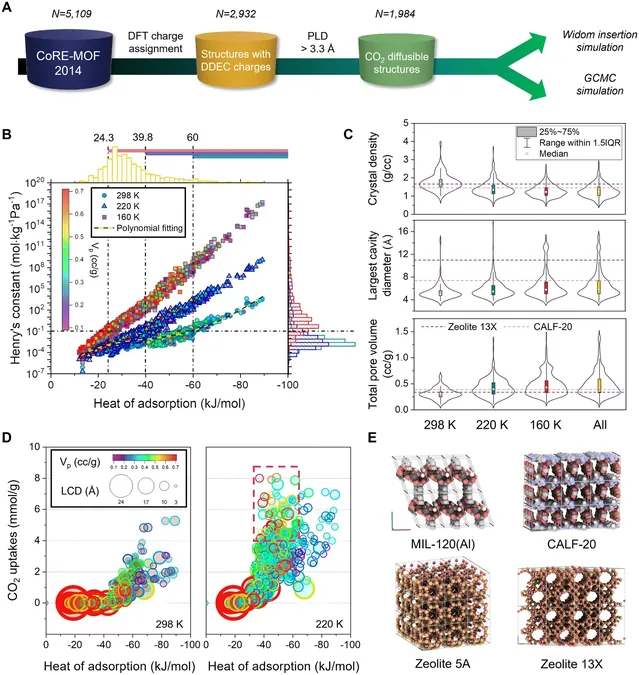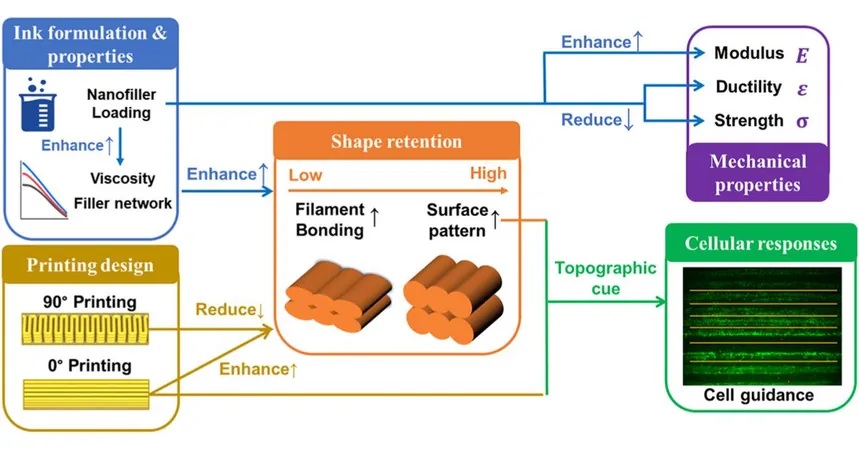
Revolutionary Low-Cost Method to Capture CO₂ Using Cold Temperatures and Common Materials
2025-07-07
Author: Jia
A Game-Changer in Carbon Capture Technology
Researchers from Georgia Tech’s School of Chemical and Biomolecular Engineering have unveiled a groundbreaking method for removing carbon dioxide (CO₂) from the air, significantly aiding the fight against global warming. As direct air capture (DAC) technologies have emerged over the past decade, their high costs have made widespread implementation challenging. However, a new study in *Energy & Environmental Science* reveals a fresh perspective on CO₂ capture, making the process both efficient and affordable.
Harnessing the Power of Cold Energy
The research team, which included experts from Oak Ridge National Laboratory and institutions in South Korea, combined DAC with an innovative approach that utilizes the low temperatures generated from liquefied natural gas (LNG) regasification—a common industrial process. Typically, LNG must be heated to return to gas form, often wasting its cold temperature energy. Instead, this study suggests employing that cold energy to chill ambient air, creating optimal conditions for CO₂ capture.
The Science Behind the Success
Instead of relying on traditional amine-based materials that chemically bind CO₂ but are limited in effectiveness, the researchers used 'physisorbents,' porous solids that efficiently absorb gases. This method benefits from the near-cryogenic temperatures, causing water vapor to condense out of the air, thus enhancing CO₂ capture without expensive water-removal processes.
Dramatically Reduced Costs and Increased Efficiency
In economic modeling, the team concluded that integrating this LNG-based method could slash the cost of capturing CO₂ to as little as $70 per metric ton, a staggering reduction from current methods that can exceed $200. The study highlighted two standout physisorbents: Zeolite 13X, an affordable and durable material used in water treatment, and CALF-20, known for its stability and performance in capturing CO₂.
Expanding the Geographical Reach of Carbon Capture
Traditionally, DAC systems thrive in dry, cool locations. The new approach could change that by utilizing existing LNG infrastructure, making deployment feasible in temperate and humid coastal areas, thus broadening the scope for carbon removal. Professor Ryan Lively emphasized that LNG terminals around the globe could potentially capture over 100 million metric tons of CO₂ per year by 2050 by harnessing their cold energy.
Paving the Way for the Future of Carbon Capture
As nations strive for net-zero emissions, this innovative approach offers a viable path forward. The research team is focused on refining materials and designs for larger-scale applications. Furthermore, the study opens the door for a wider array of materials for DAC, allowing previously overlooked physisorbents to become viable players when temperatures drop.
Professor Matthew Realff remarked on this broader design space, underscoring the exciting potential for new carbon capture solutions. Overall, this research is not just a step forward but rather a leap toward more accessible and efficient carbon capture technology.





 Brasil (PT)
Brasil (PT)
 Canada (EN)
Canada (EN)
 Chile (ES)
Chile (ES)
 Česko (CS)
Česko (CS)
 대한민국 (KO)
대한민국 (KO)
 España (ES)
España (ES)
 France (FR)
France (FR)
 Hong Kong (EN)
Hong Kong (EN)
 Italia (IT)
Italia (IT)
 日本 (JA)
日本 (JA)
 Magyarország (HU)
Magyarország (HU)
 Norge (NO)
Norge (NO)
 Polska (PL)
Polska (PL)
 Schweiz (DE)
Schweiz (DE)
 Singapore (EN)
Singapore (EN)
 Sverige (SV)
Sverige (SV)
 Suomi (FI)
Suomi (FI)
 Türkiye (TR)
Türkiye (TR)
 الإمارات العربية المتحدة (AR)
الإمارات العربية المتحدة (AR)